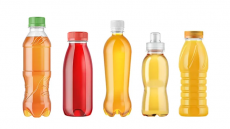Carbon neutral coke? GHG emissions cut and carbon offset at Coca-Cola sites in Spain and Sweden

The two sites – located in Jodbro, Sweden and Vilas del Turbón, Spain – are part of a pilot programme that aims to see at least six of Coca-Cola Europacific Partners’ (CCEP) sites become carbon neutral by the end of 2023.
CCEP’s only Swedish site
The Jordbro site, CCEP’s only production facility in Sweden, makes more than 350m litres of beverages annually. The site already uses 100% renewable electricity, and over the past five years, CCEP has made considerable progress its reducing its total emissions.
Specifically, since 2016, the business has cut total emissions to 1274 tonnes CO₂e, representing a reduction of 68% per litre of product produced on-site.
It has done this through ‘a number of measures’, including using CO₂ - responsible for the bubbles in fizzy drinks – from a carbon neutral source: this CO₂ is a by-product of bioethanol production – a form of renewable energy that is produced from feedstocks.
Total emissions were also reduced by CCEP’s use of LED lighting at the site’s warehouse. All forklift trucks on-site are also electric.
Vilas de Turbón site cuts emissions
CCEP’s mineral water facility in the Spanish Pyrenees is another site that already uses 100% renewable energy.
Producing more than 10 million litres of still mineral water from a natural spring per year, the site has reduced its total emissions over the past fives years down to 87 tonnes CO₂e. This marks a reduction of 36% per litre of product reduced there.
How has CCEP achieved this reduction? Similarly to the Jordbro site, CCEP has installed energy efficient LED lighting across the site. The business has also added frequency convertors to its water pumps to improve the efficiency of its water extraction.
Alongside these efforts, CCP installed a biomass boiler this year that uses sustainably sourced wood pellets instead of fossil fuels.
Both facilities have become carbon neutral certified according to the international standard PAS 2060, and as such, have committed to a further CO₂ reduction plan for the next three years.
CCEP expects at least four more of its sites will be carbon neutral certified by the end of 2023.
Offsetting carbon in Colombia
For the remaining emissions – a combined total of 1,361 tonnes CO₂e – CCEP is offsetting via the acquisition of Gold Standard certified carbon credits from a reforestation project in Colombia’s Orinoco Department.
Specifically, the carbon sequestration project will support an area of savannah that has been damaged by agricultural activity through reforestation and the restoration of its ecosystem.
The project aims to create ‘close to nature’ forests, with the primary objective being to produce high quality hardwoods combined with carbon sequestration, all the while stabilising and restoring fragile and degraded areas ‘in an economically, socially, and ecologically viable way’, explains Gold Standard.
“Overall the climate project objectives are the establishment of profitable production and conservation systems, enabling the enterprise to work in a beneficial way, with the complement of sustainable investment opportunities.”
CCEP’s announcement represents a ‘significant development’ in its ambition to reduce greenhouse has emission across its value chain by 30% - compared to 2019 figures – by 2030. By 2040, the business aims to reach net zero emissions.
“Driving effective long-term change in our environmental impact is a key priority for us, which is why we have committed to reducing emissions as far as we can before offsetting. We’re delighted to recognise this significant milestone for CCEP, and the teams who are helping us to accelerate our progress in reducing our emissions across our supply chain,” said José Antonio Echeverría, Chief Customer Service and Supply Chain Officer, CCEP.
“This is a very important moment, and a great example of how our investment and commitment to innovation is helping to bring us closer to our net zero ambition.”





























